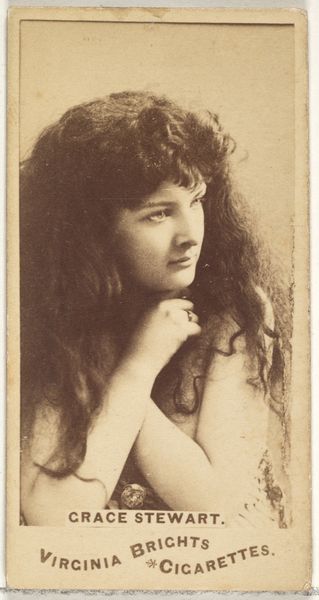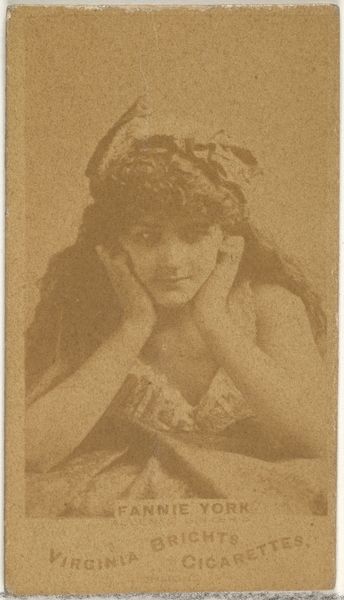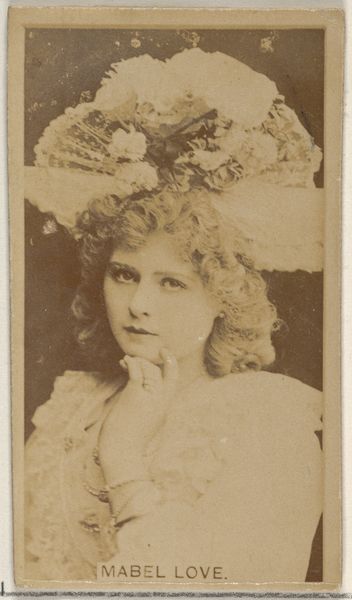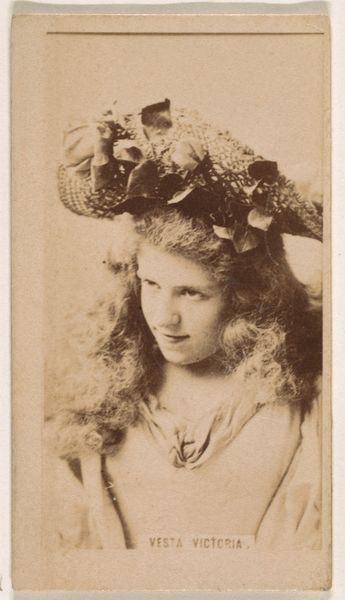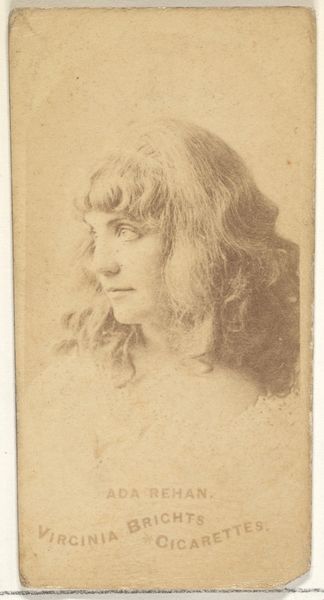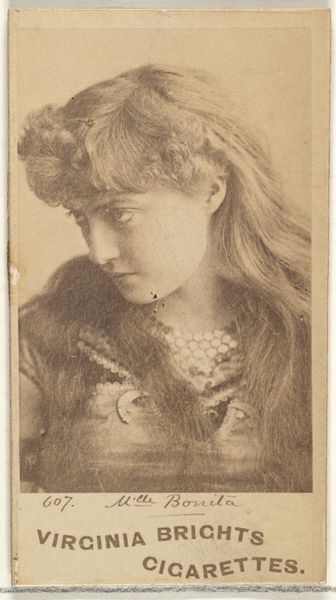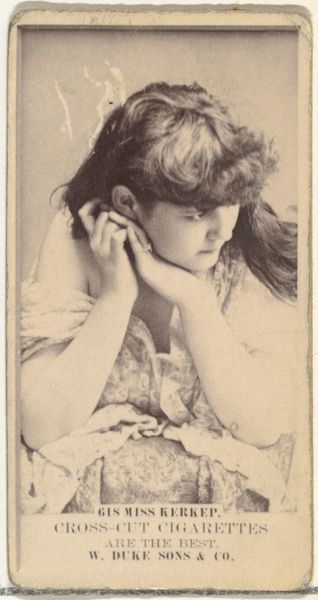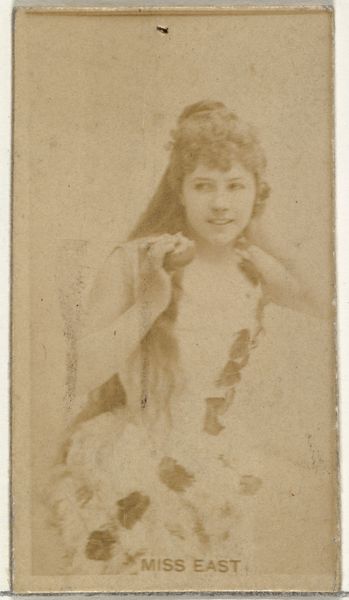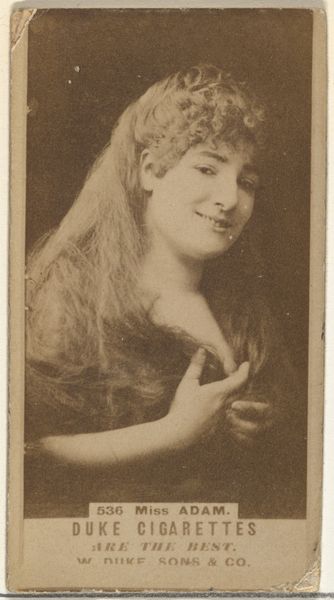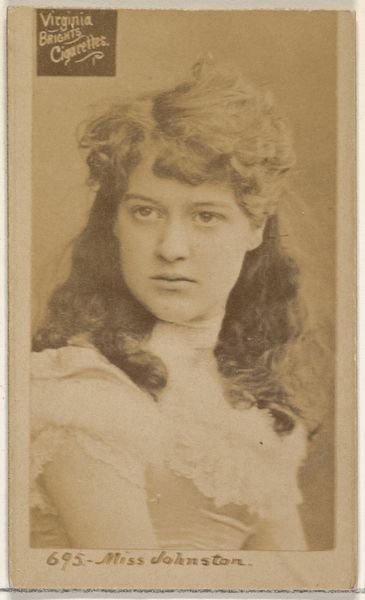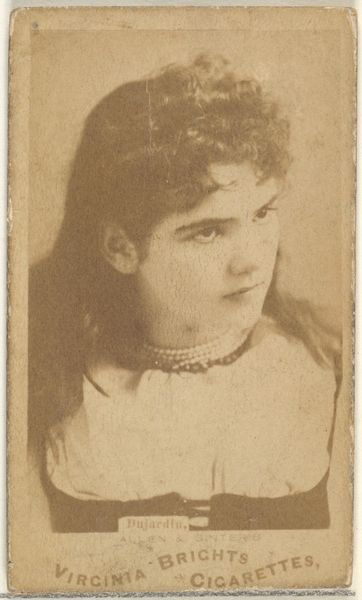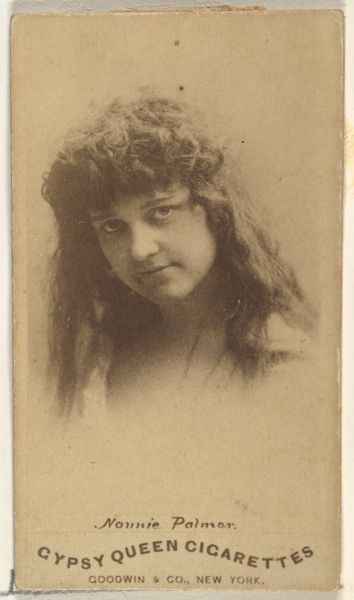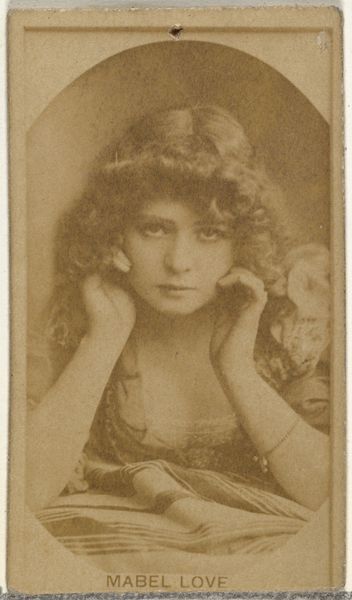
Card Number 582, Grace Stewart, from the Actors and Actresses series (N145-3) issued by Duke Sons & Co. to promote Cross Cut Cigarettes 1880s
0:00
0:00
Dimensions: Sheet: 2 11/16 × 1 3/8 in. (6.8 × 3.5 cm)
Copyright: Public Domain
Editor: So this is a cigarette card, part of the "Actors and Actresses" series issued by Duke Sons & Co. in the 1880s. It's a portrait of Grace Stewart. What strikes me most is how these images, ostensibly about artistry and beauty, were essentially marketing tools. What else do you see in it? Curator: Exactly. These cards are fascinating because they show the intertwining of commerce and celebrity in the late 19th century. Think about the social function of these objects: tobacco companies using popular figures to build brand loyalty. It's not just about appreciating Grace Stewart's beauty; it's about selling cigarettes. Notice the text, "Cross-Cut Cigarettes are the Best," a bold claim positioned right beneath her image. How does this influence your view of her portrait? Editor: I see what you mean. It sort of cheapens the artistry, right? She's an actress, someone dedicated to her craft, but here she's being used, in a way, to push a product. I wonder if she had any say in how her image was used. Curator: That’s a crucial question. These early advertising images raise concerns about agency, image rights, and the commodification of the human form. Did Stewart have control over this image? Did she receive compensation that reflected her public image being leveraged for profit? These cards represent a moment in history when the idea of celebrity endorsement was really taking shape, often with significant power imbalances. Editor: That really reframes how I look at this. It’s more than just a pretty picture. Curator: Precisely. It's a historical document revealing the complex social and economic forces at play during this period. Editor: Thanks for pointing that out. I learned so much. Curator: Indeed. Analyzing these seemingly simple images opens up avenues to investigate broader cultural trends and power structures of the 19th century.
Comments
No comments
Be the first to comment and join the conversation on the ultimate creative platform.
